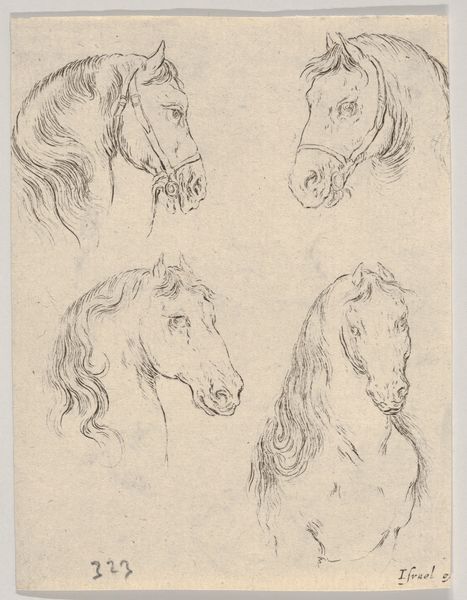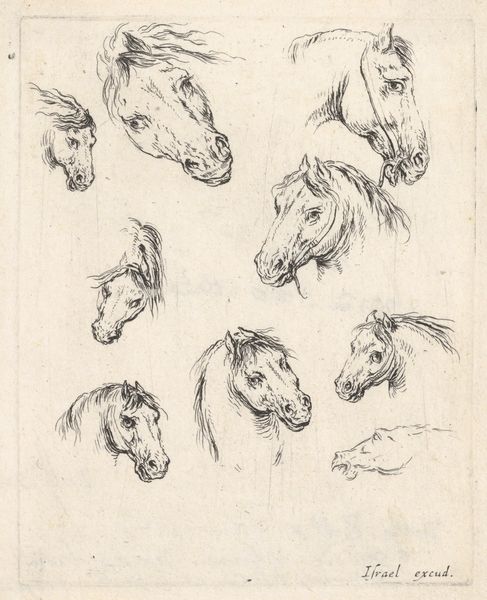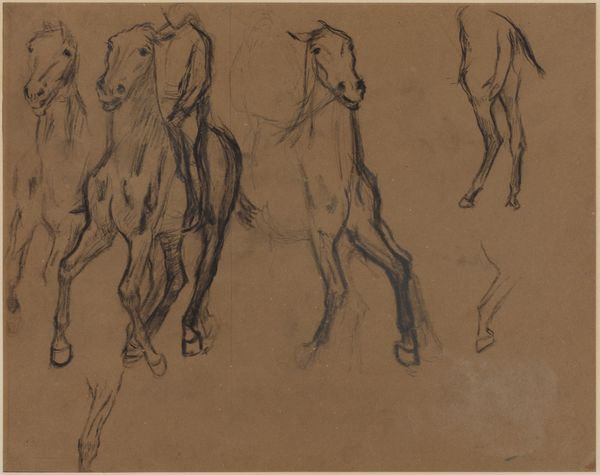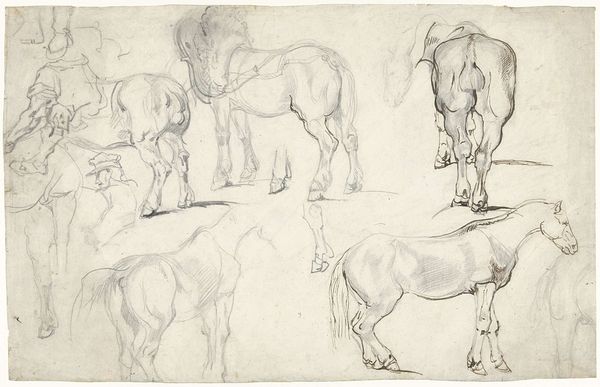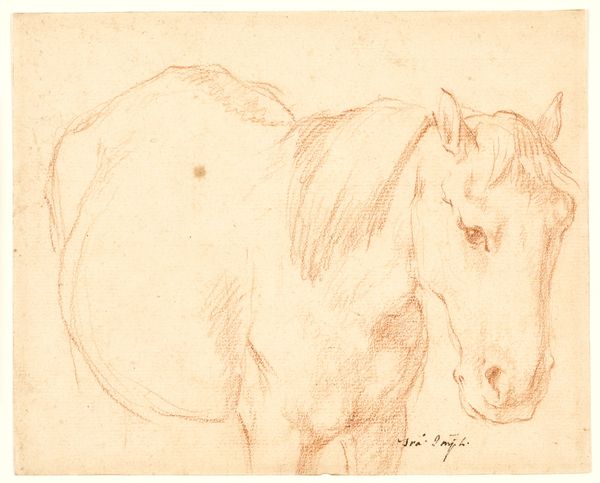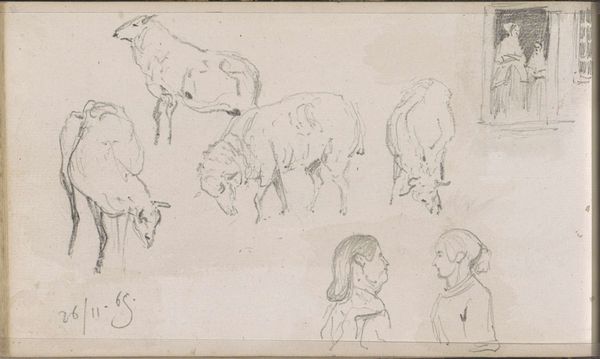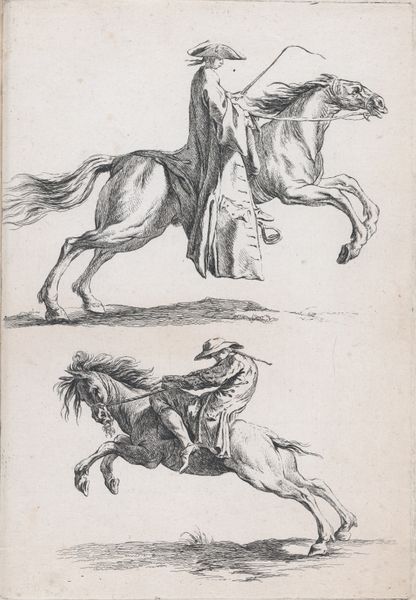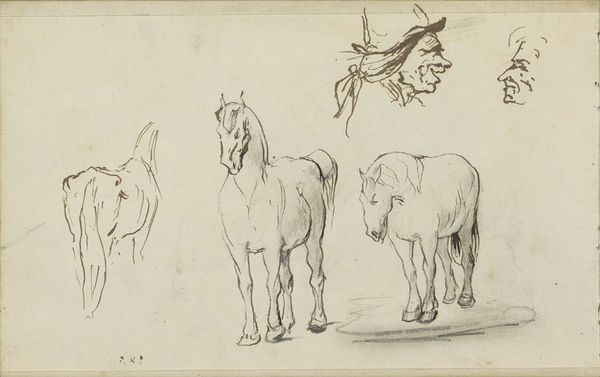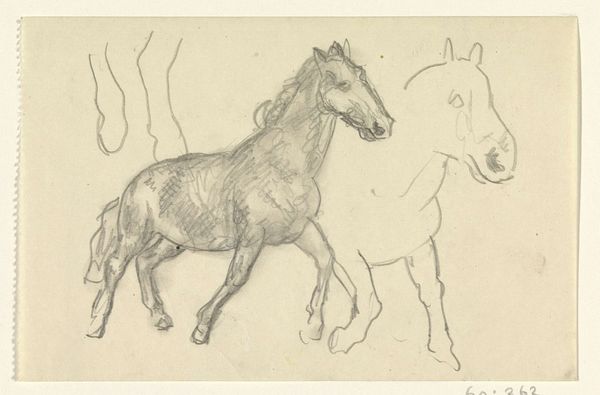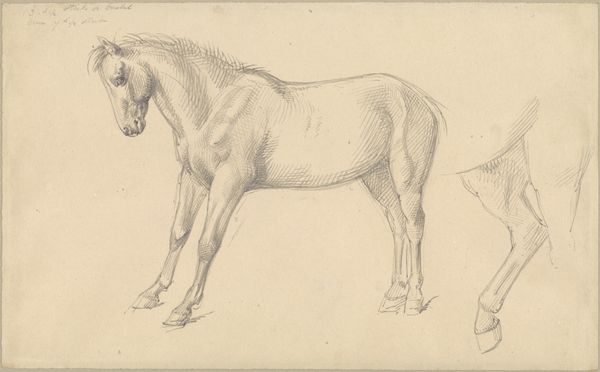
drawing, paper, ink
#
portrait
#
drawing
#
imaginative character sketch
#
quirky sketch
#
baroque
#
animal
#
pencil sketch
#
figuration
#
paper
#
personal sketchbook
#
ink
#
idea generation sketch
#
sketchwork
#
pen-ink sketch
#
horse
#
line
#
sketchbook drawing
#
fantasy sketch
#
initial sketch
Dimensions: height 85 mm, width 70 mm
Copyright: Rijks Museum: Open Domain
Curator: This is "Four Horse Heads," a pen and ink drawing by Stefano della Bella, created around 1650. It resides here at the Rijksmuseum. What strikes you about it? Editor: There's a melancholic stillness about it. The lines are so delicate, almost tentative. Each horse seems lost in its own private contemplation. It’s a series of portraits of isolated subjects sharing the same frame. Curator: Della Bella was a master of the Baroque style, often depicting military scenes and courtly life. But this…this feels different. It’s intimate, more of a study. The absence of a grand narrative makes it so interesting from a historical perspective. Editor: I agree. Given the historical context, and the heavy reliance on horses for both transportation and warfare at the time, the expressions and individual identities given to these creatures feel subversive. Usually rendered as part of a larger scene of domination, these are now individuals. Do you agree? Curator: Absolutely, though it’s important to remember Della Bella also produced many designs for equestrian equipment and ornamentation. So while the faces show individuality, the bridle on some reflects that history, that use. It points towards the power dynamics inherent in their representation. Editor: Precisely! And to think about the material—pen and ink on paper—it is accessible. It isn't some massive canvas meant to overwhelm the viewer, but an invitation into private studies, reflections on the relationships that underpin art in general and even class structures of the period. The choice is loaded, speaking volumes about what art means, who can own and enjoy it, who creates and uses animals. Curator: That's insightful. The sketch-like quality reinforces that. It breaks down traditional notions of the finished product. The artist reveals more of himself in the art making process and social constructs become questionable. Editor: Looking at it again, I feel a renewed sense of responsibility when I think of our complicated history. And a sense of grief. The horses deserve space and their place as equal individuals in nature. Curator: It seems we have much to consider here, and perhaps that's what Della Bella intended. It serves as a mirror reflecting how art, and its production and reception, is intertwined with our perception and historical biases. Editor: Right, it calls upon us to examine those forces still actively shaping our present day. Art and its animals mirror society in both light and shadow.
Comments
No comments
Be the first to comment and join the conversation on the ultimate creative platform.
